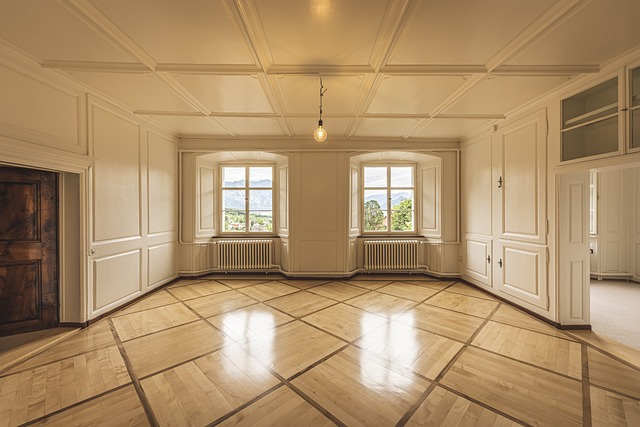Sell Your House at the Right Time: The Best Timing Tips.
Deciding on the right moment to sell your home is influenced by a myriad of factors. From understanding market trends to preparing your property for viewings, each step plays a crucial role in the journey towards a successful sale. This guide aims to simplify this process, offering insights and practical advice to help you navigate the selling landscape.
Seasonal Selling Insights
Weather conditions play a critical role in dictating buyer activity in the real estate market. Homes in regions with severe winters may experience a dip in buyer interest during colder months as snow and cold deter physical home viewings. Conversely, warmer climates see a steady flow of buyer interest year-round, with slight peaks during spring as people embrace the idea of moving and settling in before the summer heat.
Spring is recognized as a peak time to buy, driven by pleasant weather and the desire to move during summer break, making it less disruptive for families with school-aged children. This surge in demand often translates to potentially higher sale prices for sellers who list during late spring.
The summer months can be a double-edged sword. While still active, the market may cool off slightly as vacations become priority for many families, leading to fewer showings. Sellers listing in summer may benefit from less competition and a pool of more serious buyers.
In the fall, buyer urgency increases as people look to settle before the holiday season and end of the year. This can be a strategic time for sellers to list, particularly in areas where autumn weather remains conducive to home searching.
Winter is slower across most markets due to holiday distractions and colder weather, but the buyers who are active during this time are often more motivated to make a speedy transaction. Sellers willing to list during winter might find less competition for buyer attention, potentially expediting the sale process.
Regional differences significantly influence these trends. For instance, states like California and Florida, known for their milder climates, may not see as pronounced seasonal shifts as the Midwest or Northeast do. Historical sales data supports that homes in the Northeast and Midwest fetch higher prices in June and July, aligning with national trends, whereas in the South and Southwest, slightly cooler spring or fall months could be more opportune times for listing.
Sellers can better strategize on timing their home sales by incorporating this information, maximizing their chances for better outcomes by aligning with seasonal buyer behaviors and historical sale price trends unique to their region.
Market Conditions Analysis
Understanding the current state of the housing market is crucial for homeowners looking to sell their property. This includes tracking mortgage rate trends and recognizing whether it’s a buyer’s or seller’s market, as these factors heavily influence the timing for selling a house to maximize both speed and profit.
Mortgage rates play a significant role in housing demand. Lower mortgage rates mean potential buyers can afford more expensive homes since their monthly loan payments will be less, encouraging more buyers to enter the market. Conversely, when rates climb, fewer people can afford to be homeowners, which usually means fewer buyers and potentially longer sale times for sellers.
If mortgage rates are trending upwards, it might be strategic for sellers to list their homes sooner rather than later. Buyers may rush to lock in rates before they rise further, creating a temporary spike in demand that sellers can capitalize on.
It’s essential to understand whether you’re in a buyer’s or seller’s market. A buyer’s market occurs when available homes for sale exceed buyer demand. In such markets, homes tend to sell slower, and price reductions are common. Sellers in a buyer’s market may need to be more patient or make their homes stand out through pricing or home improvements.
Conversely, in a seller’s market, there are more buyers than available homes. These conditions can lead to multiple offer scenarios and homes selling above listing price, benefiting sellers. Listing a home during a seller’s market maximizes the chances of a swift sale at a profitable price point.
Signs of a seller’s market include:
- Low inventory coupled with rising home prices
- Bidding wars on available properties
- Current housing trends, such as a sustained period without significant new constructions or first-time buyer incentives
To make an informed decision on when to sell your house , homeowners should monitor local housing trends closely since national trends don’t always reflect local market conditions. Some areas may experience growth due to local employment opportunities increasing demand for housing, despite national indicators suggesting a slowdown.
Analyzing current mortgage rate trends and whether your local market favors buyers or sellers provides essential insights that impact the best timing for selling your house. Selling in a seller’s market during lower mortgage rates could significantly enhance the sale speed and profitability. Sellers should keep a close eye on market conditions locally and nationally to choose the most opportune moment to list their property.
Preparation for Listing
Getting your home ready to list for sale can seem like a daunting task, but it doesn’t have to be! With some simple strategies for minor repairs, decluttering, and staging, you can significantly enhance your property’s appeal and possibly its value. Timing these prep tasks with optimal sales periods further ensures you get the best possible outcome. Here’s a step-by-step guide to getting your home sales-ready.
Minor Repairs: You don’t have to remodel your kitchen or bathroom; simple fixes can make a world of difference. Walk through your home with a critical eye or better yet, invite a friend to do the same. They’ll likely catch issues you’ve glossed over out of familiarity. Fix leaky faucets, replace burnt-out bulbs, and tighten loose handles. Consider giving your walls a fresh coat of paint in neutral colors, a universally appealing choice that makes spaces appear larger and more welcoming.
Decluttering: Prospective buyers want to imagine themselves in your home, but that’s hard to do if it’s choked with personal items. Start decluttering by removing excess furniture, personal photographs, and any items you don’t use regularly. This might also be a good time for a garage sale or a donation run. Clearing out space not only makes your home more attractive to buyers but also makes your eventual move easier.
Staging: Staging is about strategically arranging furniture and decor to showcase your home’s best features. You don’t necessarily need a professional stager (though they can work wonders). Focus on high-impact areas like the living room, kitchen, and master bedroom. Make sure each room has a clear purpose. A spare bedroom that’s been serving as storage could be staged as a home office, appealing to work-from-home buyers.
Keep surfaces clean and relatively bare, add a vase of fresh flowers for a splash of color, and make sure every room is well-lit — open curtains during the day and switch on lamps to create a warm glow in the evening if you’re showing the house then.
For optimal results, align your prep tasks with the best times to sell outlined earlier in this guide. If March through May is the optimal listing period in your area, aim to start making minor repairs and decluttering at least a month or two beforehand, leaving ample time for staging just before photos are taken and the listing goes live.
Don’t forget about curb appeal! The exterior is the first thing buyers see, either online or in person. Mow the lawn, trim hedges, plant some flowers, and maybe even paint the front door. A welcoming entrance can make all the difference.
By following these guidelines on minor repairs, decluttering, and staging — and timing these activities to match the seasonal peaks of the property market — sellers can greatly increase their chances of a quick and profitable sale. The effort you put into preparation is often directly reflected in the sale price and speed of your transaction.

Timing is everything in the real estate market. By aligning your selling strategy with seasonal buyer behaviors and keeping an eye on local market conditions, you stand a better chance of achieving a swift and profitable sale. The effort you invest in preparing to sell your house not only enhances its appeal but can significantly influence the final outcome.





